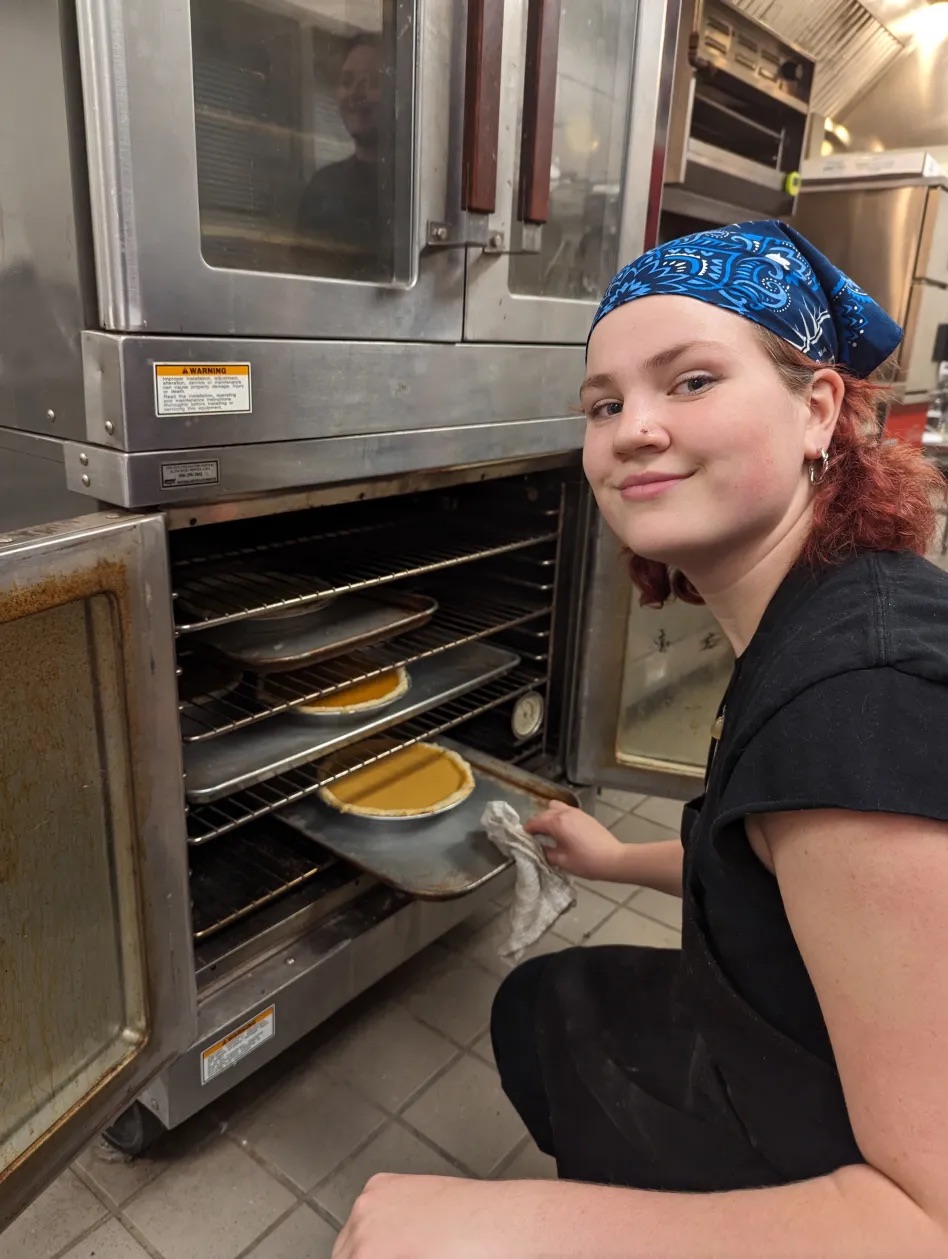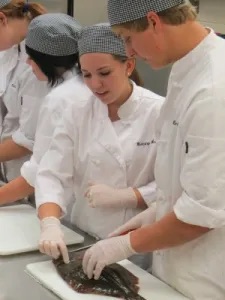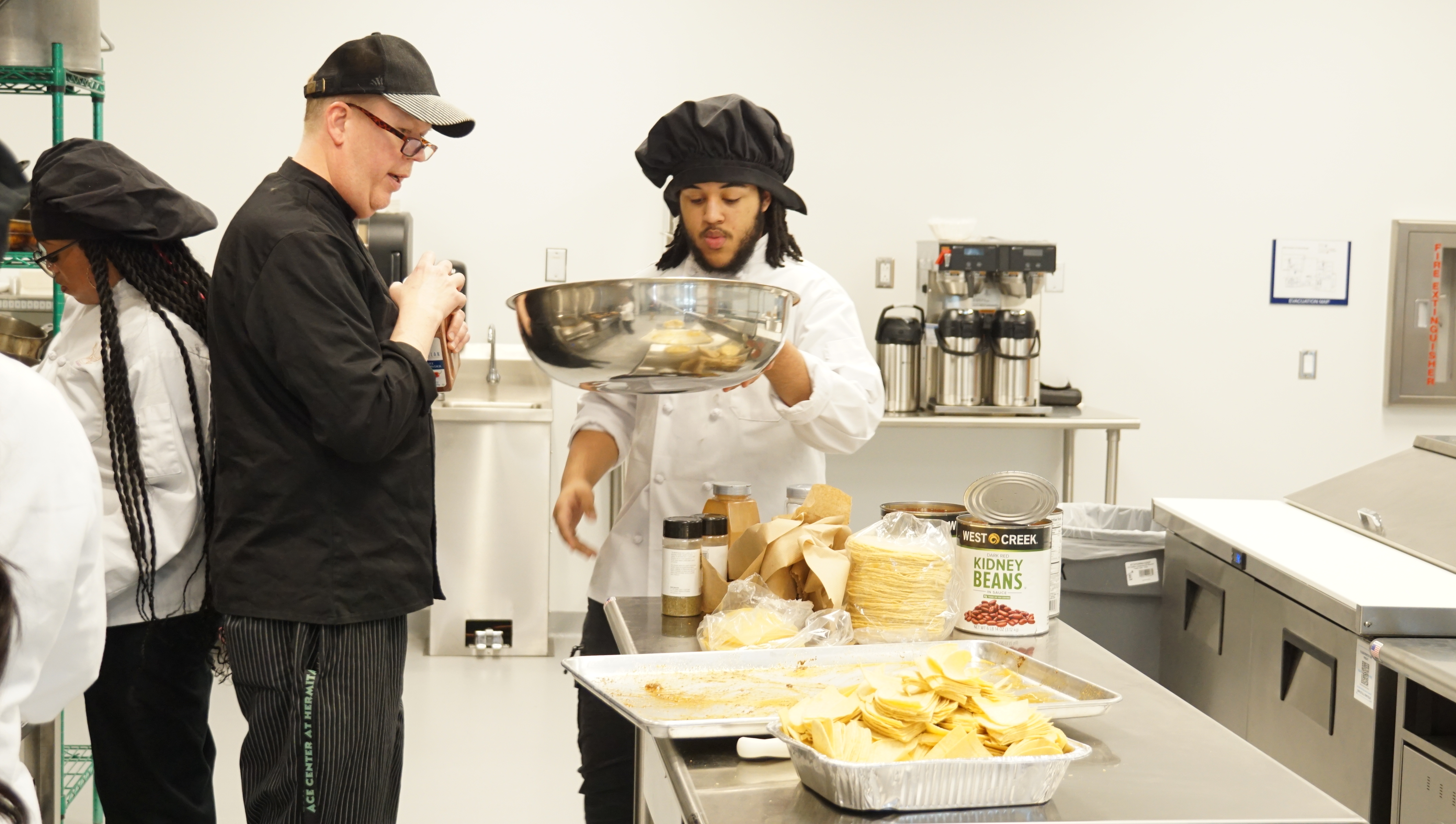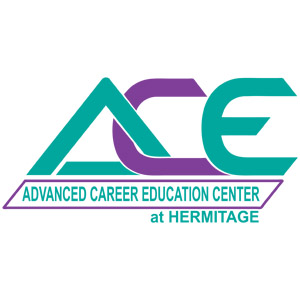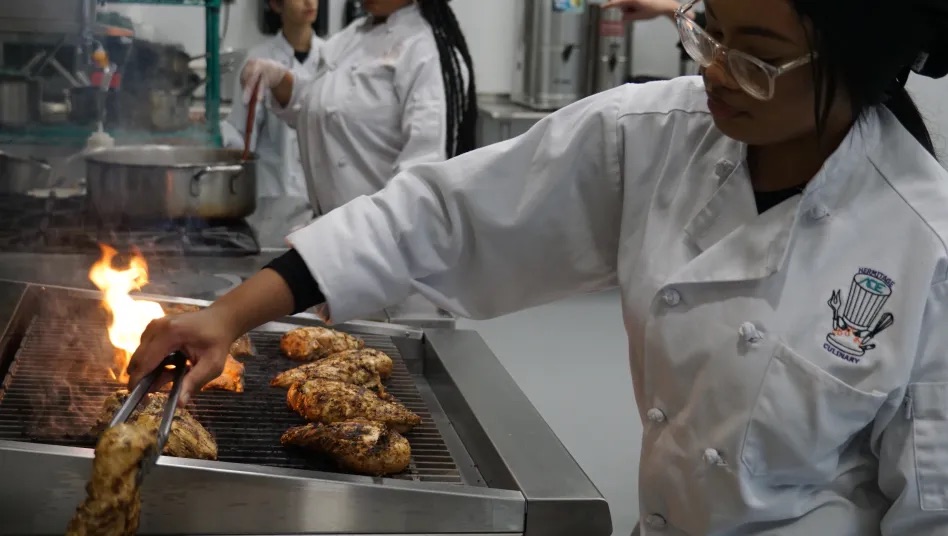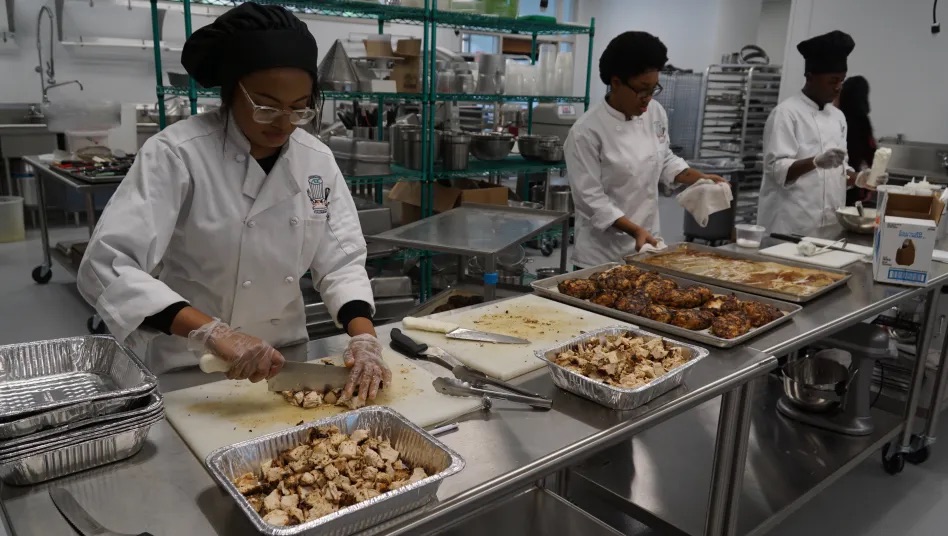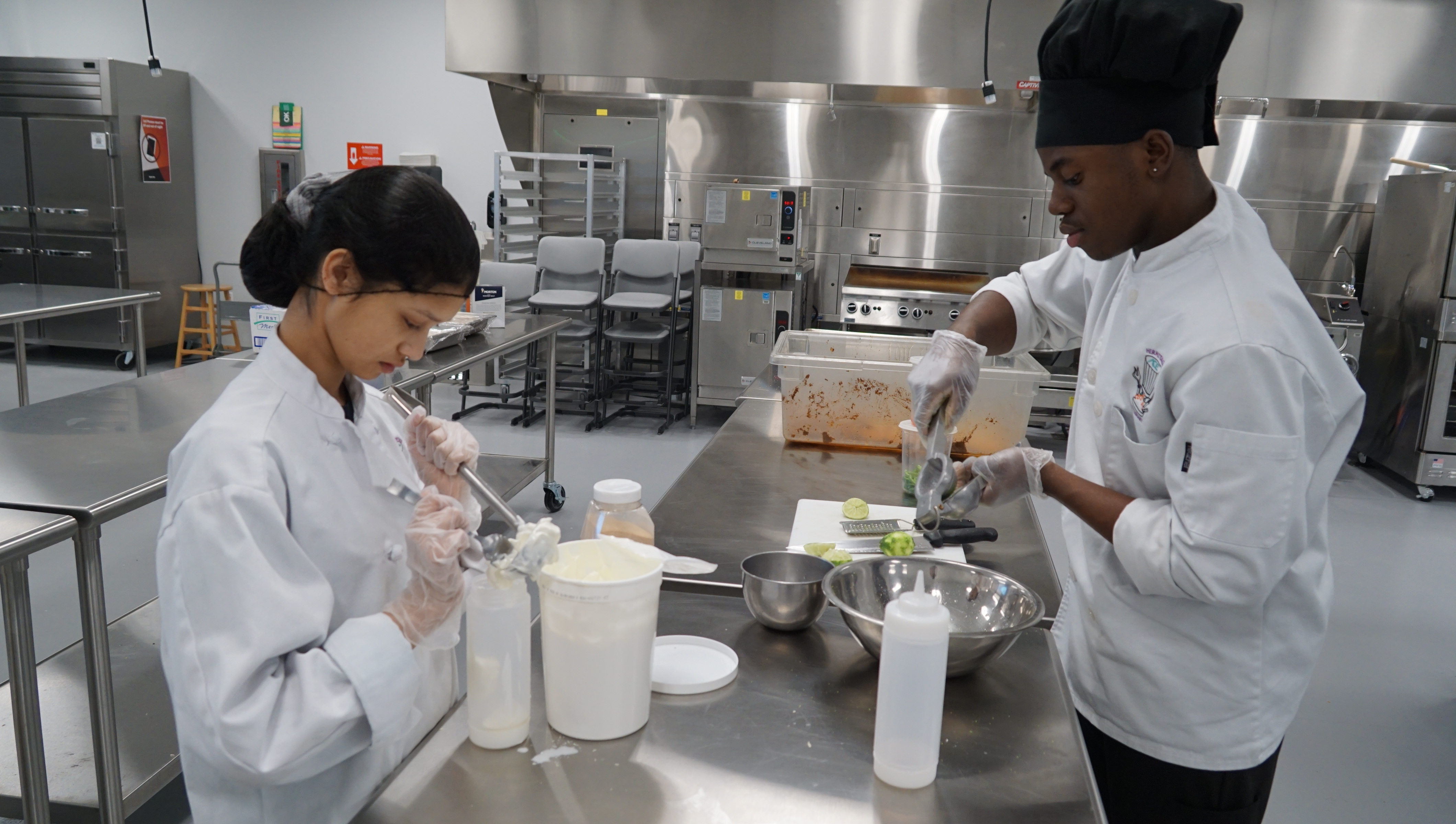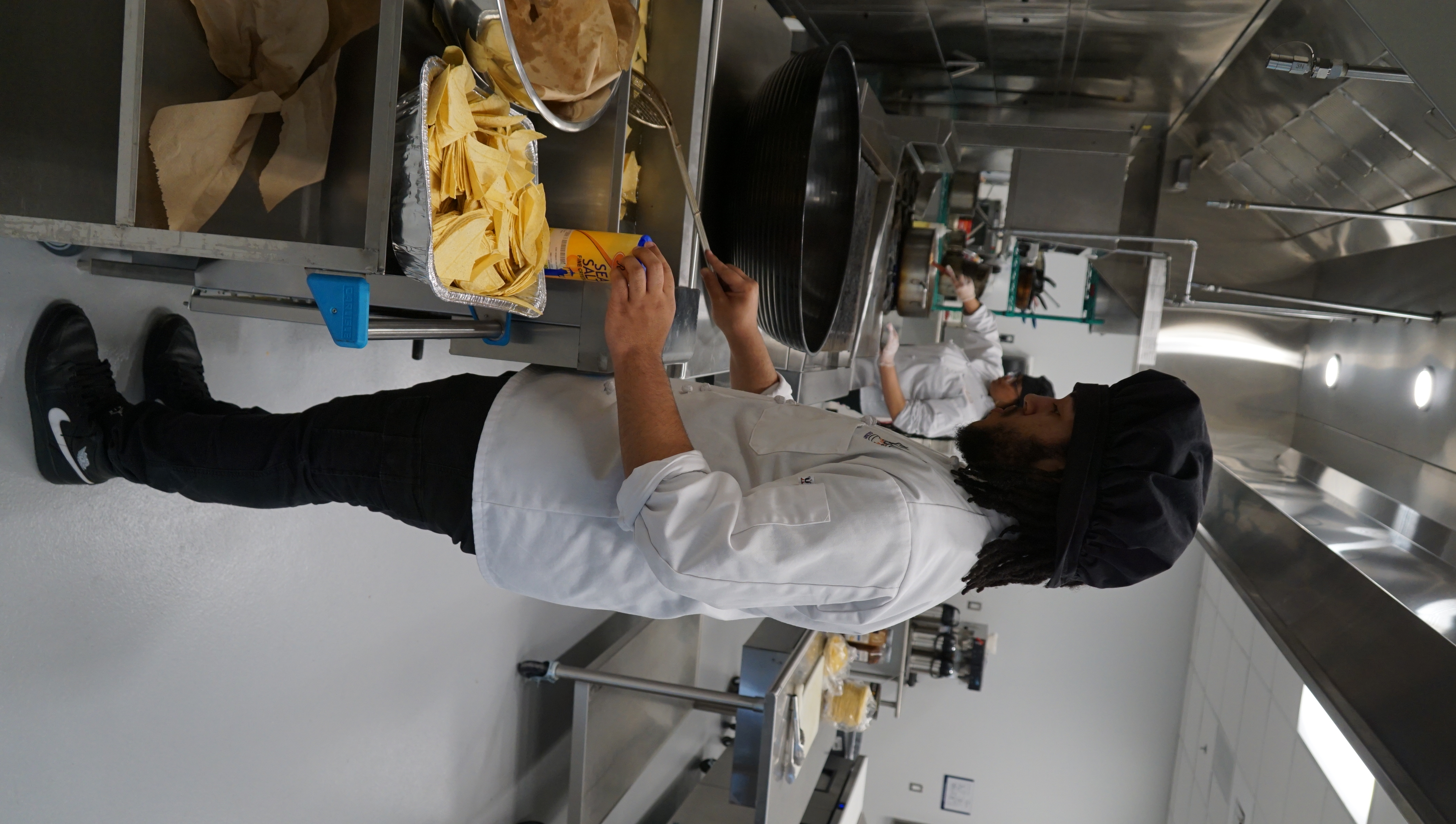Culinary Arts I and II
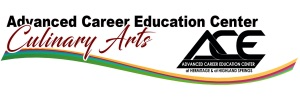
Duration | Year 1 | Year 1 | Year 2 | Year Semester 2 | Certifications Offered | Dual Enrollment |
|---|---|---|---|---|---|---|
2 years | 8275, Culinary Arts I | 8272, Catering/Banquet Specialization | 8276, Culinary Arts II | 8279, Baking and Pastry Specialization | Workplace Readiness Certification (Year 1) | Reynolds DE Option |
6 credits | 2 credits | 1 credit | 2 credits | 1 credit |
Two years, six credits: Advanced Career Education Center at Hermitage and Advanced Career Education Center at Virginia Randolph
ACE Center at Hermitage instructors: Hill Carter, Kate Chidester
ACE Center at Virginia Randolph Instructor: Terran Evans
Virginia course title: Culinary Arts I and Culinary Arts II. Click the link for detailed PDF descriptions.
If you love cooking and want to turn your passion into a profession, training in the culinary arts is a must. Culinary arts is more than just preparing food. It's also about creativity, presentation, hygiene, nutrition and customer satisfaction. Training in the culinary arts can help you develop these skills and learn from experienced chefs who can mentor you and inspire you. You can also gain exposure to different cuisines, cultures and techniques to enrich your culinary repertoire. Training in the culinary arts can open many opportunities, whether you want to work in a restaurant, a hotel, a catering company or even start your own business. You can also network with other professionals and build your reputation in the industry. Training in the culinary arts is not only rewarding but also fun and exciting. You can express yourself through your dishes and share your love of food with others. Training in the culinary arts is important because it can help you achieve your dreams and make a difference in the world of gastronomy.
Culinary Arts I: This course prepares students for entry-level positions in the culinary field and is dedicated to providing students with working knowledge in basic cooking and baking skills and techniques, along with catering and business skills for successful employment. Students participate in operating a simulated restaurant and catering service.
Culinary Arts II: This course builds on the knowledge gained in Culinary Arts I. The program emphasizes occupational skills for employees in the culinary world. Employment opportunities include catering, hotel and restaurant cooking, and working as bakers. With the approval and recommendation of the administration and teacher, students may spend time in actual work experience in conjunction with their studies. Students prepare luncheons and dinners for various school and government functions to enhance their classroom knowledge.
Students have the opportunity to become certified in:
Culinary Arts Level I
ServSafe Food Handler* (available at ACE Center at Hermitage)
Culinary Arts Level II
Certified Junior Culinary Certification (available at ACE Center at Hermitage)
The ServSafe Food Handler certification is a comprehensive solution that delivers consistent food safety training to employees. This ensures that the same food safety principles are delivered every time.
Sections can be completed in approximately 10 minutes.
Color photos from the learner’s point of view help reinforce food safety concepts.
Enhanced assessment can be taken after training to measure if employees have the minimum competency in food safety knowledge.
Certification covers five key areas:
Basic food safety
Personal hygiene
Cross-contamination and allergens
Time and Ttemperature
Cleaning and sanitation
Source: U.S. Bureau of Labor Statistics, Occupational Employment Statistics click here.
